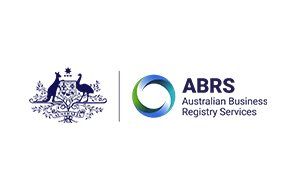Division 7A - What's the fuss about?
| Largely misunderstood by most taxpayers and some tax professionals, this part of Income Tax Assessment Act 1936 covers just one section, broken down into innumerable subsections and continues to gives us sleepless nights. This provision aims to catch the mischief of an individual taxpayer accessing underlying cash from after tax profits of a private company without having to pay their top up marginal tax rate. |
 |
So what's the fuss about?
To explain with an example, say a private company makes $500k and pays a flat 30% tax on it. If the after tax profit of $350k is distributed to it's mum and dad shareholder, they would most certainly have to pay a top up tax, which could be as high as 22% of the cash dividends. How easy would it be if the shareholders instead just took this cash out of the company as loans, or made the company pay for their personal expenses? This is the mischief that Div7A of ITAA'36 purports to catch!
What would the cash be used for? This could be broadly split into two categories;
A. Personal use and lifestyle
- Cars, bikes, boats
- Holidays, shopping, personal use goods
- LIfestyle assets, home improvements, etc
B. Personal investment assets
- Income generating assets like properties, market investments
- Capital growth assets like land, with no personal use elements
- Bank deposits and interest bearing assets
So why is a loan from a private company to a trust targeted by Div7A?
Presumably because, a trust could be used as a mechanism of using funds for both A – Personal Use and B – Personal Investments. Unknown to most taxpayers and accountants, a trust could actually be settled for holding funds for private use of its' beneficiaries, thus coming in direct firing line of Div7A.
Subdivision EA of Div7A focuses on application of Div7A to circumvent use of trust for the above mischief, either directly or indirectly.
In 2009 the commissioner further made a flip-flop on ATO's erstwhile position that a UPE from a trust to a company will not be a 'reverse' loan from company to a trust thereby possibly being caught under Div7A! This created a huge confusion and contradiction in the profession and has to an extent contributed to the current 'post implementation review' of Div7A.
So what is this 'post implementation review' about?
In simplistic terms, post implementation review aims to achieve simplistic solutions to this otherwise highly complicated section of taxation law, making it efficient yet easy and cost effective to implement.
One particular objective is to allow trusts to retain working capital at company tax rates. Various options are being circulated where a somewhat fine line of differentiation is being drawn between a business trust and investment trust. The underlining objective is to support a cause for a business trust to hold working capital while taking advantage of a corporate tax rate e.g. by making a UPE to a company.
Ultimately, is this Fuss worth it?
| It baffles me to see the amount of effort and thought that is being drawn in, to try and prevent an investment trust from taking advantage of corporate tax rates! I am sure tax fraternity would agree that till date, the options that have come out only add to the complexity, creates more questions than answers, and leaves us no better off!
It's important to understand here that, to the extent circumventing mischief towards A - Personal Use and Lifestyle use of trust is concerned, Subdivision EA supported by other provisions of Div7A is fairly robust to prevent it. If there are any gaps, would possibly be not so difficult to plug them, in the current structure of legislation. |
 |
So why are we so bothered about preventing trusts from using perceivably concessionally taxed funds for B- Personal investment assets? Consider this;
- Personal investment assets contribute to the growth of the economy, are an integral part of our growth cycle, provide support to business cycle (with many trusts holding assets which are ultimately used by related party businesses) and contribute to our taxation system;
- In most jurisdictions there is a penal land tax regime on most types of trusts.
- It is more expensive and administratively cumbersome to set up a trust, hold assets and run a trusts.
- Bank funding is limited when assets are held in trusts as compared to being held in individual hands.
If analysed closely, it will appear that inspite of all the above covenants, trusts are used for holding investment assets (albeit to a limited extent) largely for asset protection and other worthwhile purposes.
|| So is this fuss worth it, to try and exclude an investment trust in our quest of quarantining a trust from Div7A impact? Wouldn't it be simpler and more efficient to simply exclude a trust from the list of 'culpable borrowers' under Div7A and make legislation robust to circumvent 'A- the personal use and lifestyle' mischief through trusts? ||

Join MGAA's Community






